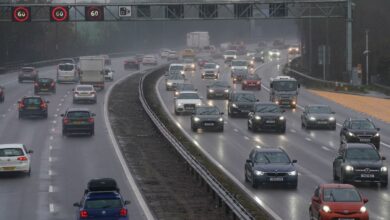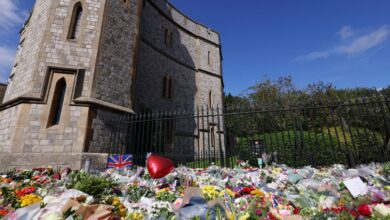Mapped: Areas in UK facing sharpest drop in house prices

A map has revealed the areas of the UK worst affected by falling house prices as the value of residential property continues to decline amid stubbornly high inflation and soaring borrowing costs.
The housing market, which remained buoyant during the Covid pandemic, has begun to slow in recent months as potential buyers think twice about taking the plunge with interest rates at an eyewatering 5 per cent – the highest level in 15 years.
The Bank of England’s base rate hikes have fed through to mortgage costs, with buyers now facing rates in excess of 6 per cent in some cases, meaning hundreds of pounds in additional costs.
The housing market slow-down has led to falling prices overall across the country, with southern England continuing to be the worst-hit part of the country. Take a look at our map below for the areas most affected by falling prices:
Property values in south east England were down -3 per cent annually last month – the largest fall since July 2011, according to an index published in June by Halifax. The average house price in the south east last month was £384,106.
London was the second worst-hit region at -2.6 per cent, putting the average house price at £533,057 – still well out of reach for the average Briton. The decline in London was the capital’s worst annual decline since October 2009 and a drop of around £15,000 over the past year.
Welsh house prices were down by -1.8 per cent annually (average house price £215,183), compared to a +1.0 per cent increase in May – the nation’s first year-on-year fall since March 2013.
In Scotland, prices were down slightly on the year (-0.1 per cent, average house price of £201,774), but nonetheless significant in being the first annual contraction in property prices in the last three years.
Although house prices are trending downwards overall there are a number of regions continuing to buck the trend.
The West Midlands recorded a rise of 1.5 per cent in June (average house price £251,139) and there were also marginal gains in Yorkshire & Humberside (+0.2 per cent, £203,674).
Separate figures published by the Nationwide Building Society on Tuesday found that the average UK house price declined by 3.8 per cent annually in July – the fastest annual drop in 14 years. This marked the weakest reading since July 2009.
It said house prices dropped by 0.2 per cent month-on-month in July, to reach £260,828 on average.
Robert Gardner, Nationwide’s chief economist, said: “Investors’ views about the likely path of UK interest rates have been volatile in recent months.”
He added: “There has been a slight tempering of expectations in recent weeks but longer-term interest rates, which underpin mortgage pricing, remain elevated.
“As a result, housing affordability remains stretched for those looking to buy a home with a mortgage.
“For example, a prospective buyer, earning the average wage and looking to buy the typical first-time buyer property with a 20 per cent deposit, would see monthly mortgage payments account for 43 per cent of their take-home pay (assuming a 6 per cent mortgage rate).
“This is up from 32 per cent a year ago and well above the long-run average of 29 per cent.
“Moreover, deposit requirements continue to present a high hurdle – with a 10 per cent deposit equivalent to 55 per cent of gross annual average income.”
Data compiled by Nationwide Building Society in June





